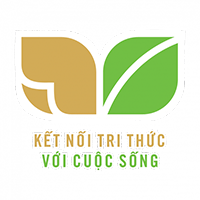Bài tập tiếng Anh lớp 11 Unit 16 THE WONDERS OF THE WORLD có đáp án (1)
Bài tập tiếng Anh lớp 11 Unit 16 THE WONDERS OF THE WORLD có đáp án
Chúng tôi xin giới thiệu đến quý thầy cô giáo và các em học sinh bộ sưu tập Bài tập trắc nghiệm Tiếng Anh lớp 11 Unit 16 The Wonder Of The World nhằm giúp cho việc dạy và học môn Tiếng Anh trở nên hiệu quả hơn. Bộ sưu tập này gồm các tài liệu hay, chất lượng là các bài tập trắc nghiệm trong Unit 16 sẽ giúp các em học sinh biết cách làm các bài tập trong chương trình Tiếng Anh 11.
Giải bài tập SGK tiếng Anh lớp 11 Unit 15 SPACE CONQUEST
Giải bài tập SGK tiếng Anh lớp 11 Unit 16 The Wonders of the World
Bài tập tiếng Anh lớp 11 Unit 16 THE WONDERS OF THE WORLD có đáp án
I. PRONUNCIATION
Choose the word that has the underlined part pronounced differently from that of the others.
1. a. world b. wonder c. theory d. proceed
2. a. pyramid b. spiral c. private d. recycle
3. a. weather b. treasure c. great d. jealous
4. a. raised b. ranked c. surpassed d. laughed
5. a. suggest b. century c. upon d. bury
II. LANGUAGE FOCUS
A. Choose the word or phrase - a, b, c or d - that best completes the sentence or substitutes for the underlined word or phrase.
6. The structure consisted ______ approximately 2 million blocks of stone,
a. on b. with c. of d. in
7. The Great Pyramid ranked ______ the tallest structure on earth for more than 43 centuries.
a. in b. of c. at d. as
8. The purpose of the pyramid was to protect the burial chamber ______ the weather.
a. for b. from c. of d. in
9. The Great Pyramid of Giza is one of the, famous man-made wonders of the world.
a. artificial b. natural c. modern d. enternal
10. The Great Pyramid was only ______ in height in the nineteenth century AD.
a. proposed b. promoted c. improved d. surpassed
11. There are rumors of buried ______ in that old house.
a. belongings b. tomb c. treasure d. chamber
12. Each tower of the Ponagar Towers was ______ to a different god.
a. dedicated b. distributed c. delivered d. contributed
13. The Great Wall is China's most popular ______.
a. construction b. attraction c. impression d. contribution
14. A visit to the Great Wall will certainly bring tourists great ______ in each step of the wall.
a. excite b. exciting c. excitement d. excited
15. The Great Wall of China is considered one of the greatest wonders in the world ______ its magnificence and significance.
a. in spite of b. because c. instead of d. thanks to
III. READING
A. Fill in each blank space with one appropriate from the box..
visible network conservative Astronauts monument
structure discernible designated measured dispelled
The Great Wall is probably China's best-known (31) ______ and one of its mast popular tourist destinations. In 1987 it was (32) ______ a World Heritage Site by the United Nations Educational, Scientific and Cultural Organization (UNESCO). The Great Wall is not a single, continuous (33) ______. Rather, it consists of a (34) ______ of walls and towers that leaves the frontier open in places. Estimates of the total length of the monument vary, depending on which sections are included and haw they are (35) ______. The Great Wall is about 2,400 km (about 1,500 mi) long, according to (36) ______ estimates. Other estimates cite a length of 6,400 km (4,000 mi), or even longer. Some long-standing myths about the wall have been (37) ______ in recent decades. The existing wall is hat several thousand years old, nor is it, as has been widely asserted, (38) ______ with the naked eye from outer space. ((39) ______ have confirmed this. However, same of the wall is (40) ______ in special radar images taken by satellites.)
B. Read the passage carefully, then choose the correct answer.
The ruined temples of Angkor are perhaps one of the mast impressive Seven Wonders of the World. Located in modern day Cambodia near Lake TonIe Sap, the largest freshwater lake in Asia, Angkor was the seat of power for the Khmer Empire from the ninth to the fifteenth century. The ruins of Angkor are d9cumented as same. of the mast impressive ones in the world, rivaling the pyramids of Giza in Egypt. Why this mighty civilization died out is a question that archeologists are now only beginning to ponder. The answer, it turns out, may be linked with the availability of fresh water.
One possible explanation far the downfall of the Khmer Empire has to do with the inhabitants irrigation system. The temple and palaces of Angkor were constructed around a series of artificial reservoirs and canals which were annually flooded to capacity by the Mekong River. Once filled, they were used to irrigate the surrounding rice patties and farmland during the course of the year. Farmers were completely dependent upon the water for their crucial rice crop. Without consistent irrigation, the farmers would have been unable to maintain functional crop production.
Scientists speculate that toward the end of the Khmer Empire the hydraulic systems of the reservoirs and canals broke down. The construction of hundreds of sandstone temples and palaces required an enormous amount of physical labor. In addition, as the capital of the Khmer Empire, Angkor contained upwards of one hundred thousand people who resided in and around Angkor. In order to feed so many people, the local farmers were driven to grow food quicker and more efficiently. After centuries of continual use, the irrigation system was pushed beyond its capacity. Soil erosion, nutrient depletion, and the loss of water led to decrease in the food supply. With less food available, the people of Angkor slowly began to migrate to other parts of Cambodia thus leaving the marvelous city of Angkor to be swallowed by the jungle. Therefore, it is speculated that the Khmer Empire may have fallen victim to its own decrepit infrastructure.
41. What is the passage mainly about?
a. Modern day agricultural procedures in Cambodia.
b. A possible explanation for the, decline of a civilization.
c. The essential role water plays in farming.
d. Religious temples of the ancient Khmer Empire.
42. The passage preceding the passage most likely discusses ______.
a. architecture of ancient Asian civilization
b. religious practices of the people of Angkor
c. the form of government practiced by the Khmer Empire
d. the other six wonders of the world
43. According to the passage, Lake Tonle Sap in Cambodia ______.
a. is an enormous fresh body of water in Asia
b. was unable to supply enough fish for the people of Angkor
c. became polluted due to a population explosion
d. is one of the Seven Wonders of the World
44. Why does the author mention the hydraulic systems of the reservoirs?
a. They supplied irrigation from the Indian Ocean.
b. They became non-functional due to overuse.
c. They were destroyed by nearby warrior tribes.
d. They helped transport the sandstones for constructing temples.
45. It can be inferred from the passage that the inhabitants of the Khmer Empire ______.
a. were intentionally starved by the farmers
b. lost their food source due to excess rainfall
c. supplemented their diets with meat hunted in the nearby jungles
d. depended upon rice as their main source of food









